How do Millennials want Charlotte to grow? #ShapeCLT has a vision.
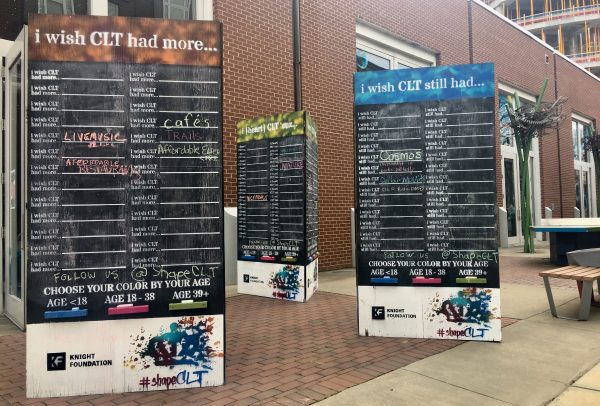
Most city plans get input from residents, but if you’ve attended many city planning public meetings, you might notice the crowds tend to be a bit on the not-young side. It’s conventional wisdom that people are more likely to become interested in civic engagement when they buy property or have kids – not things many early 20-somethings do.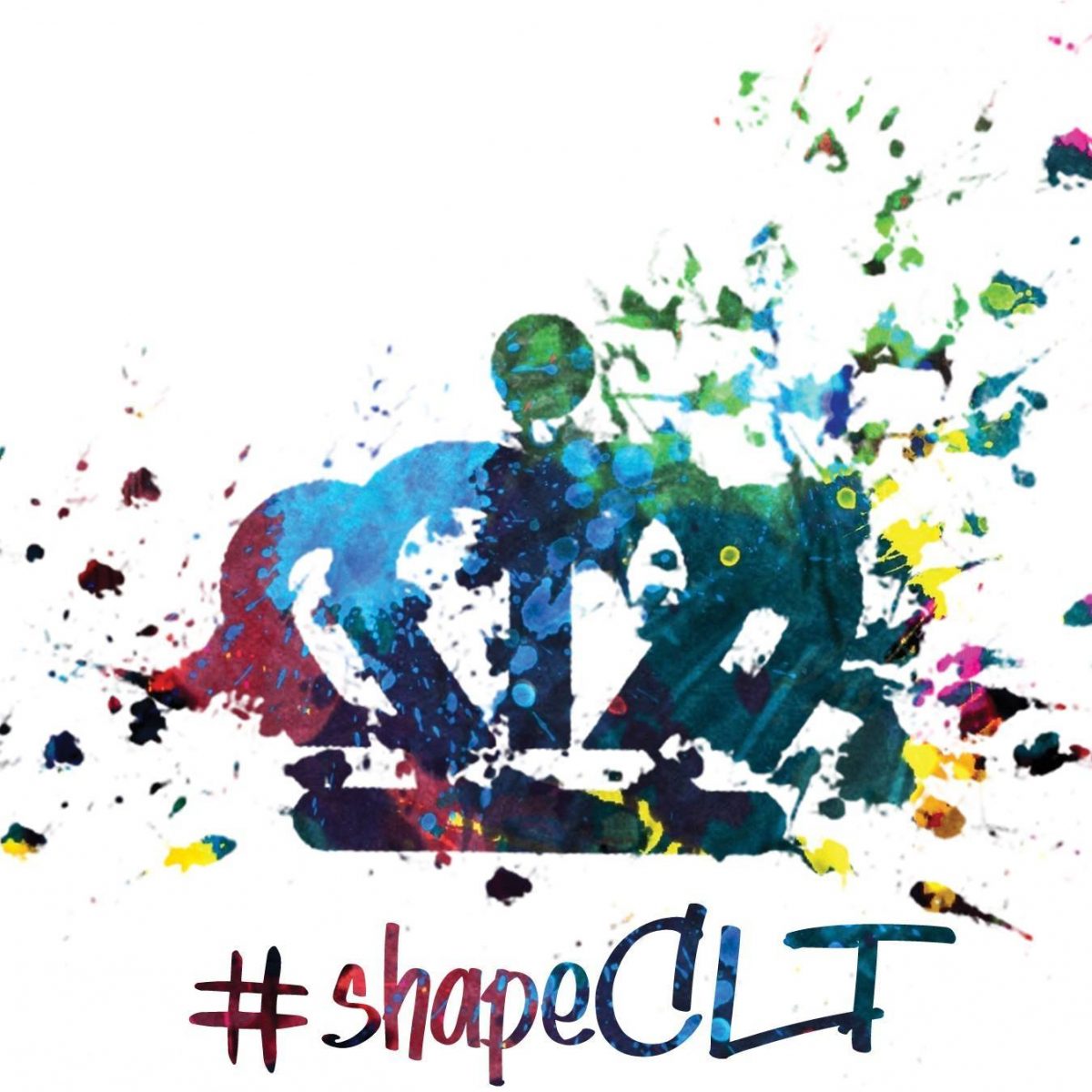

But a class of fifth-year architectural students at UNC Charlotte wants to change that. With a grant from the John S. and James L. Knight Foundation, they’re working on #ShapeCLT, “A Vision for Charlotte. By Millennials. For Millennials.”
For much of the spring semester they’ve been studying other cities’ plans, with a particular focus on the new Atlanta City Design Plan, as well as looking at research on the role the Millennial generation is playing in U.S. cities and seeking input from Charlotteans. You might have spotted some of their totems in the past few months at the Charlotte-Mecklenburg Government Center, at breweries, at Johnson C. Smith University, at a UNC Charlotte basketball game, at the city’s St. Patrick’s Day celebration and elsewhere. The totems, inspired by artist Candy Chang’s “Before I Die” project, are large blackboards that let anyone answer questions like:
- I wish CLT had more …
- I wish CLT still had …
- I (heart) CLT cuz …
They’re also using Facebook, Instagram (@shapeclt) and the Twitter hashtag #shapeCLT and have pulled together hundreds of responses. For example:
“I WISH CLT HAD MORE … ”
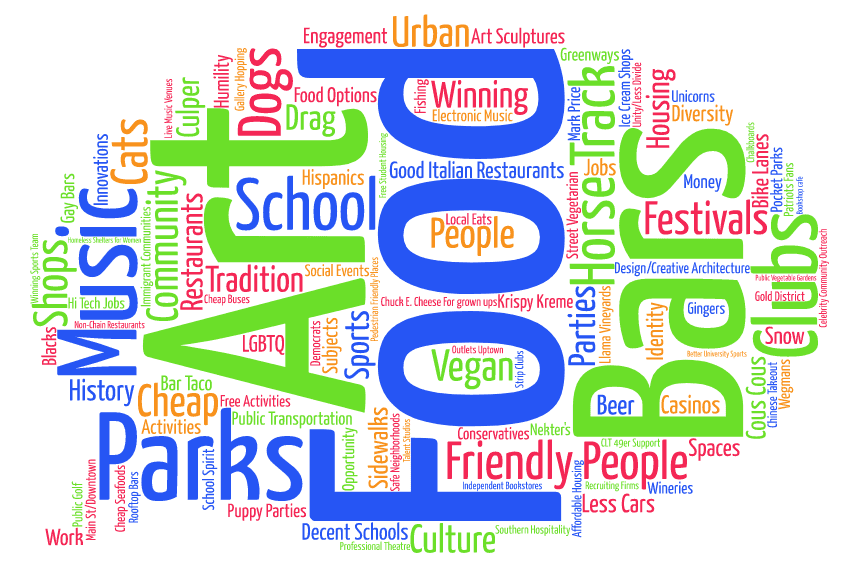
A visual representation of which answers were most common to the question “I wish CLT had more … ” Image courtesy UNC Charlotte College of Arts + Architecture
Their diagram of the most common answers for “I wish CLT had more …” shows “Food, bars, music, parks” dominating the answers but with plenty of other responses, such as “diversity,” “tradition,” “cheap seafoods,” “LGBTQ,” “horse tracks,” “unity/less divide,” and even “unicorns.”
The diagram of answers for “I wish CLT still had” shows several dominant themes: “historic buildings,” “respect,” “Phat Burrito,” and “the Bobcats.”
“I WISH CLT STILL HAD … ”
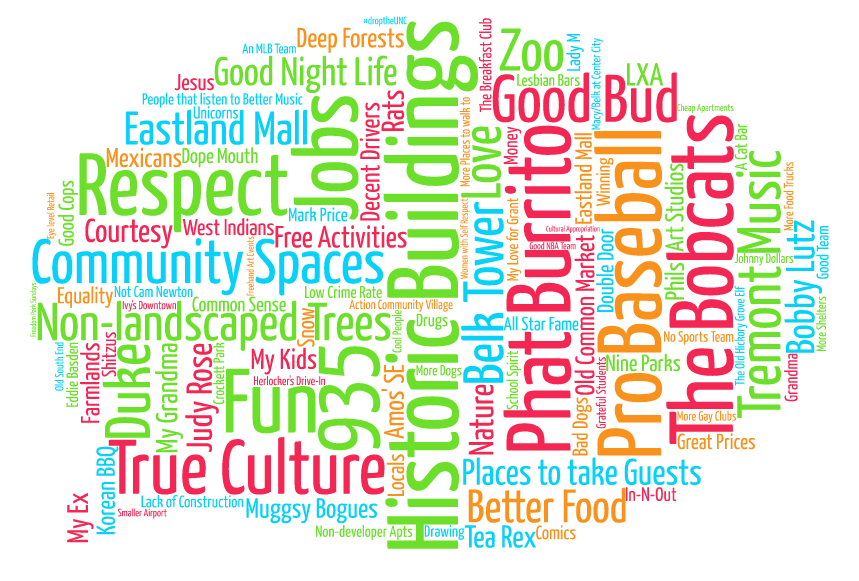 A visual representation of which answers were most common. Image courtesy UNC Charlotte College of Arts + Architecture
A visual representation of which answers were most common. Image courtesy UNC Charlotte College of Arts + Architecture
To explain the city’s context they’ve created a 38-page online book looking at Charlotte history, starting with the area’s geographic features. It moves through the city’s founding along the Great Wagon Road, its textile mill history, the post-Civil War era of Jim Crow segregation, racial redlining of neighborhoods, Urban Renewal, the airport and light rail, sports, banks and cultural amenities.
The terms the students are using to describe the Charlotte they envision are:
Connected – “A connected city is characterized by physical and digital interactions.”
Lively – “A lively city consists of streetlife, transparency, movement, sound, color, and visual busyness.”
Radically inclusive – “A welcoming city is home to a synergy of cultures that gives the spice of life and variety to the everyday.”
Urgently innovative – “The innovative city is unafraid of radical change; tackling contemporary issues with urgency.”
Ecocentric – “An ecocentric city cares for the well-being of the environment and the people who live in it.”
Healthy – “A healthy city cares about the well-being if its citizens, ensuring the use of clean resources and practices.”
Shared – “We value creative cooperation, and fully support the sharing economy.”
Unique – “A unique city is distinguished by its iconic architecture, history, geography, and vibrant local culture.”
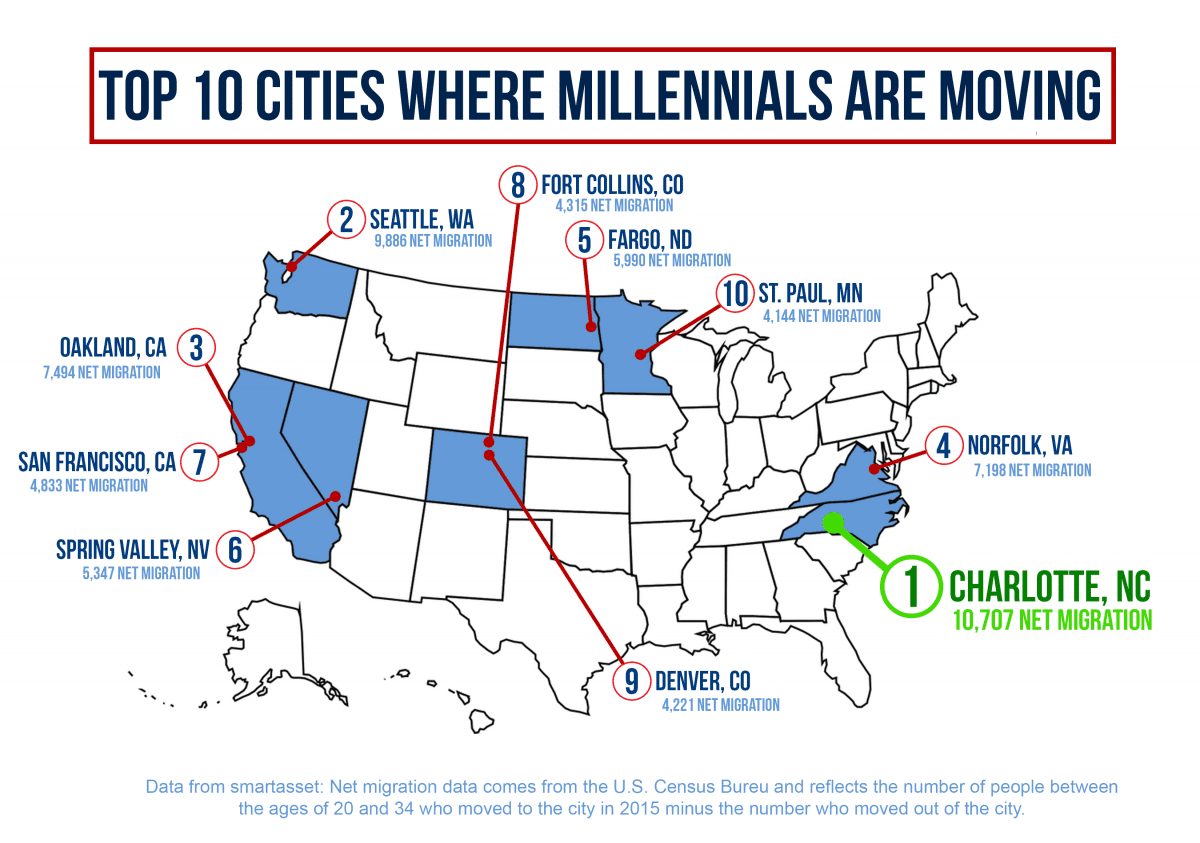 Census data for 2015 showed Charlotte net in-migration of Millennials topped the nation. Image courtesy UNC Charlotte College of Arts + Architecture
Census data for 2015 showed Charlotte net in-migration of Millennials topped the nation. Image courtesy UNC Charlotte College of Arts + Architecture
Some of the ideas the students have discussed adding to their plan:
- Urge the city to draw up a music master plan, to encourage live music and protect music venues.
- Encourage a 1 percent for pedestrian environment provision, akin to the current 1-percent-for-public-art ordinances that dedicate 1 percent of the total cost of city and county government building projects to public art.
At semester’s end, in May, the students will hold their final presentation with a jury of expert planners and architects, and then they’re scheduled to present their findings to the Charlotte-Mecklenburg Planning Commission at its May 7 monthly work session. Later this summer the final plan will be coming out, with the history section, a look at the city’s characteristics, 30 design ideas, before-and-after sketches and a discussion of how the engagement process was carried out.
Not coincidentally, their professor is the current chair of the Charlotte-Mecklenburg Planning Commission, Deb Ryan. Ryan last week wrote to Charlotte City Council members and the mayor urging the city – currently working to rewrite the city’s zoning and other land-use related ordinances – to pause that process and develop a comprehensive plan.
Ryan said she doesn’t know whether any of the students’ ideas will make their way into any official city plans. “As in all our work,” she said, “we drop pebbles and make ripples, hoping they reach and influence decision-makers.”